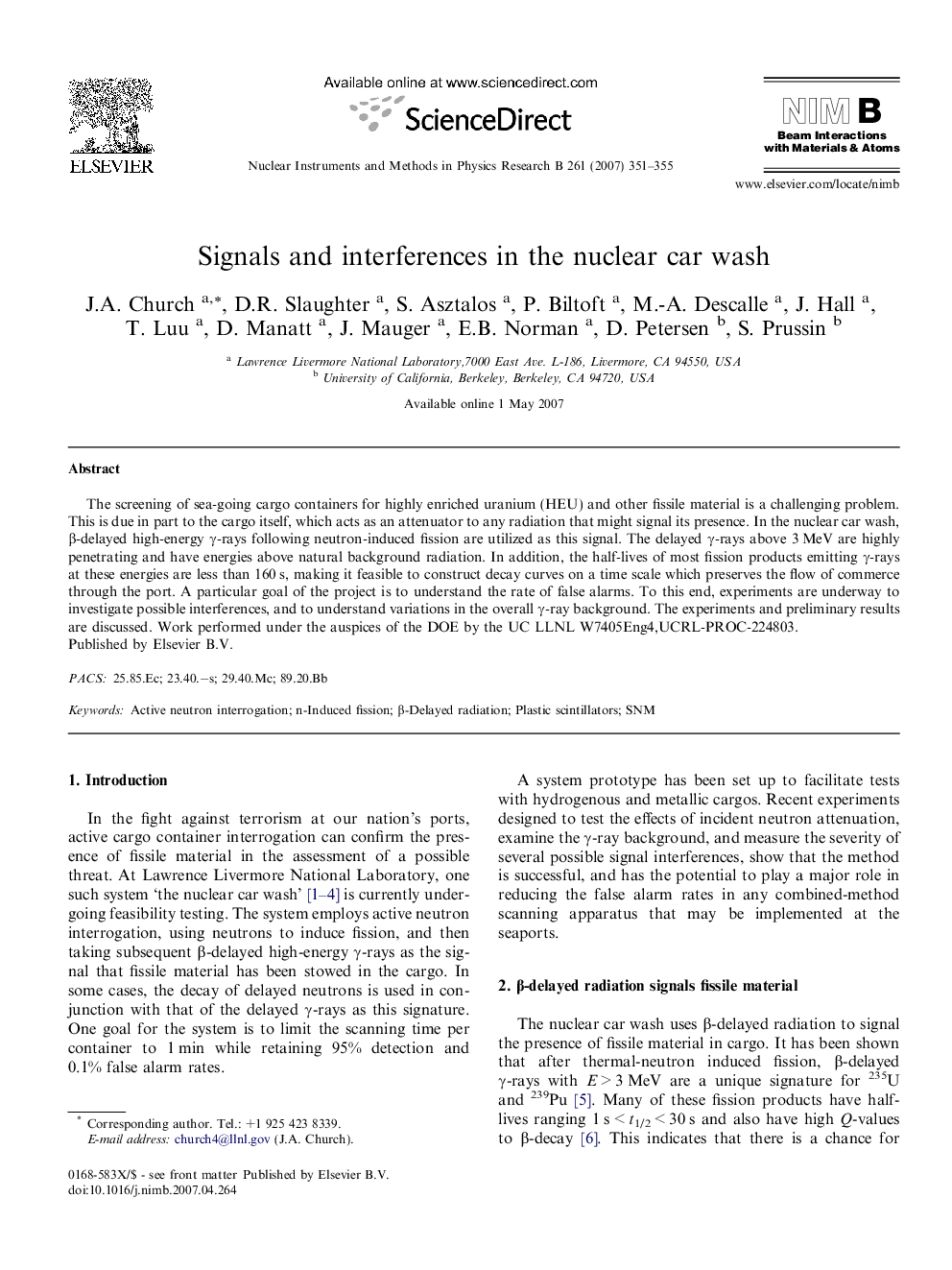| Article ID | Journal | Published Year | Pages | File Type |
|---|---|---|---|---|
| 1685717 | Nuclear Instruments and Methods in Physics Research Section B: Beam Interactions with Materials and Atoms | 2007 | 5 Pages |
The screening of sea-going cargo containers for highly enriched uranium (HEU) and other fissile material is a challenging problem. This is due in part to the cargo itself, which acts as an attenuator to any radiation that might signal its presence. In the nuclear car wash, β-delayed high-energy γ-rays following neutron-induced fission are utilized as this signal. The delayed γ-rays above 3 MeV are highly penetrating and have energies above natural background radiation. In addition, the half-lives of most fission products emitting γ-rays at these energies are less than 160 s, making it feasible to construct decay curves on a time scale which preserves the flow of commerce through the port. A particular goal of the project is to understand the rate of false alarms. To this end, experiments are underway to investigate possible interferences, and to understand variations in the overall γ-ray background. The experiments and preliminary results are discussed. Work performed under the auspices of the DOE by the UC LLNL W7405Eng4,UCRL-PROC-224803.
